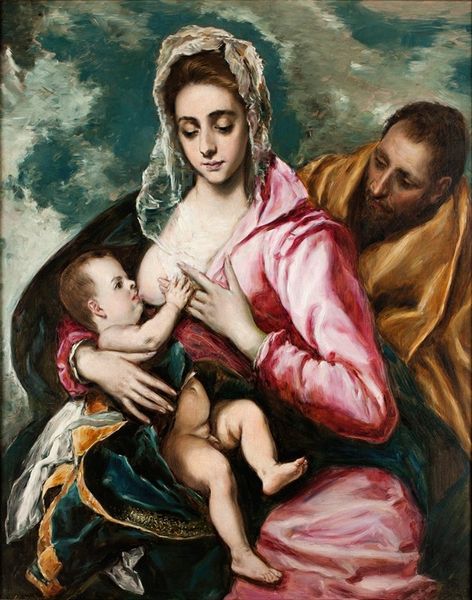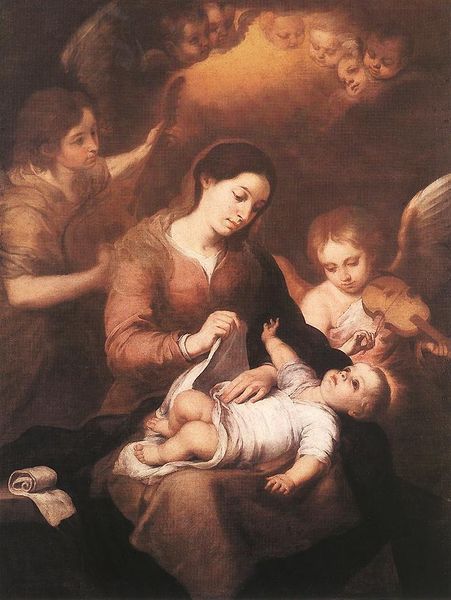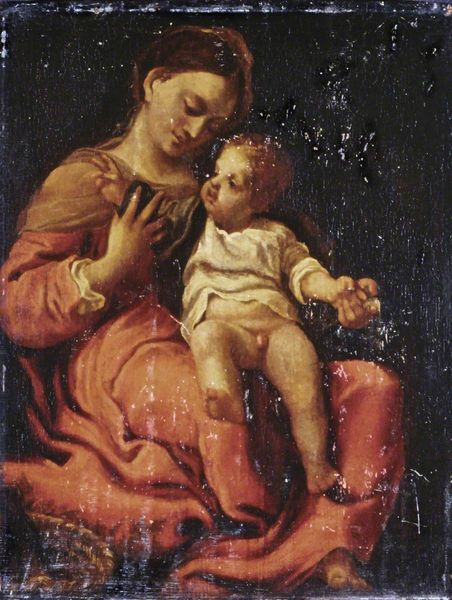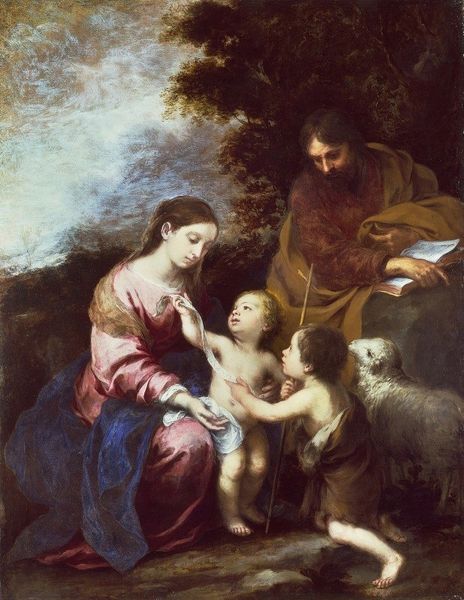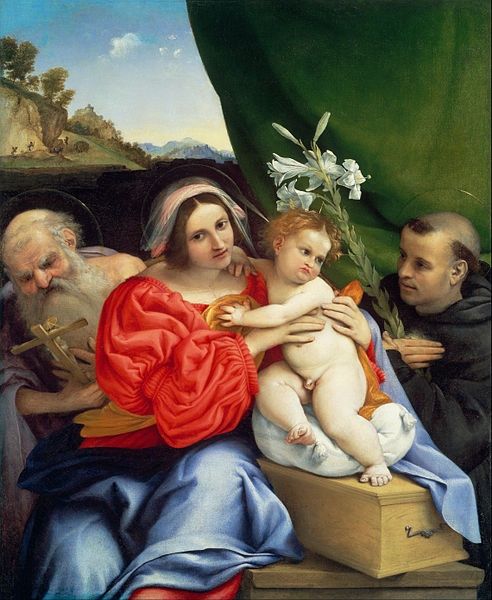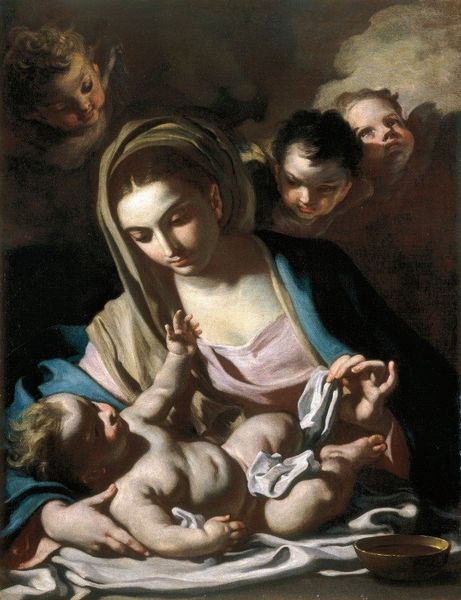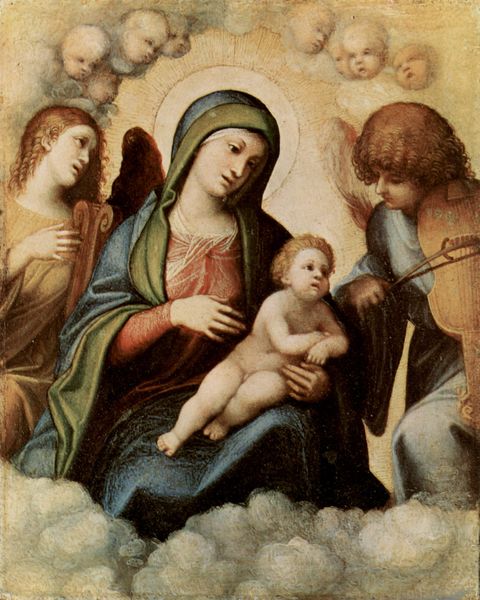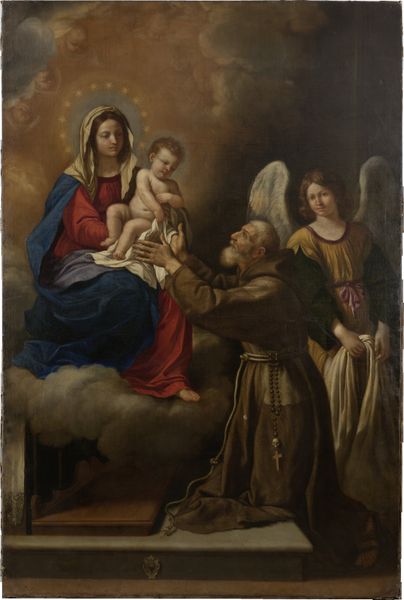
painting, oil-paint
#
portrait
#
allegory
#
baroque
#
painting
#
oil-paint
#
oil painting
#
christianity
#
history-painting
Copyright: Public domain
Curator: Welcome. We're standing before "The Vision of Saint Anthony," an oil painting crafted around 1629 by Anthony van Dyck. Editor: Immediately, I'm struck by the Baroque drama—the theatrical lighting, the dynamic composition, the almost unsettling contrast between earthly tones and ethereal light. Curator: Precisely. Van Dyck employs a masterful use of chiaroscuro to emphasize the saint's spiritual awakening, juxtaposing him against the Virgin Mary and Child. Notice how the light source, seemingly emanating from the infant Jesus, illuminates Anthony's face. Editor: It's impossible to ignore the sociopolitical context, though. Consider the period. The Catholic Church, grappling with the rise of Protestantism, used art like this to reassert its power. Paintings showcasing saints' visions were propaganda, reinforcing religious fervor. What message did this vision communicate? Curator: Van Dyck has composed this painting according to a diagonal arrangement with his mastery in play. Observe how Anthony's body and his humble dress act as the base from which, in contrast, divine vision sprouts. His opened book further symbolizes divine knowledge revealed through holy figures. Editor: But let's look more closely. Van Dyck’s subjects seem, while emotive, also strangely removed and elegant; look at their hands and gestures! We have to remember that even the clothing indicates a class; Saint Anthony's garb might indicate humility, but for whom, and from what societal position? What message did this painting intend, for whom was it? Curator: Certainly. I agree on the use of clothing within this picture to reflect identity and standing. Beyond these considerations of class and patronage is also the sheer optical spectacle here - an invitation to the divine and ethereal, don't you agree? The colour palette also stands in testament to this very element, especially in the Virgin's attire and its contrast with a darker shroud above. Editor: I find myself meditating on how Van Dyck’s talent intersects with both his historical conditions and contemporary critical engagements with faith. Understanding how faith and social justice intertwine pushes viewers to see past conventional understandings of faith-based iconography and its visual display. Curator: A valid, but complex thought to leave our listeners. May I leave with the fact that with form and style, he not only portrayed the moment but transformed our visual reception of that scene to engage divine experience.
Comments
No comments
Be the first to comment and join the conversation on the ultimate creative platform.


